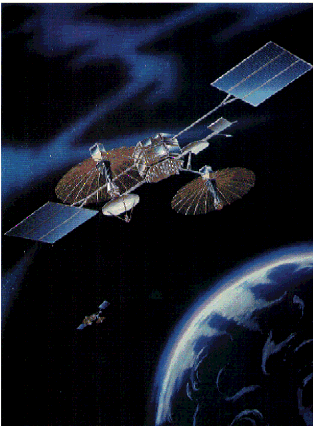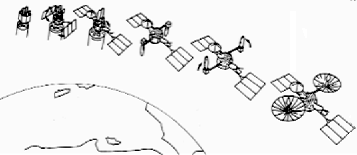

 |
Tracking and Data Relay Satellite System (TDRSS) moves large volumes of data to and from satellites with great speed. NASA uses this advanced system to track Earth-observing satellites, space shuttle missions, and special spacecraft like NASA's Hubble Space Telescope. The TDRSS is an important instrument in a new era of space exploration, utilization, and research and will play a vital role in the support of all near-Earth orbiting scientific and applications spacecraft.

After the space shuttle moves a safe distance away, the satellite's attached booster rocket, known as an "Inertial Upper Stage (IUS)," ignites and lifts the satellite to its geostationary orbit. There, the satellite detaches itself from its booster and the solar panels and antennas unfold.
When unfolded the satellite measures 17.4 meters from the outer edge of
one solar panel to the outer edge of the other (about the height of a
five-story building), and 14 meters from the outermost edge of one dish
antenna to the outermost edge of the other. The satellite is allowed to
drift -- assisted by attitude control thrusters, each no bigger than a
small human finger -- to the position assigned to it in orbit.

![]()